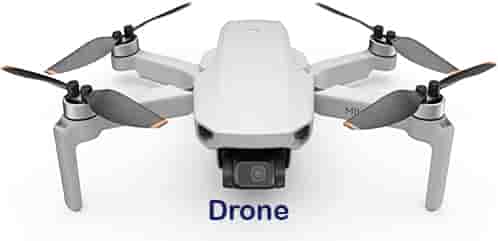

Try it for yourself here! How do I calculate ground sample distance manually?Īs promised, we’ll also share how to manually calculate GSD. We’d simply plug in these values to the calculator:
#GSD DRONE MEANING PRO#
Propeller GSD calculator exampleįor example, let’s imagine that we want to determine the GSD of a Phantom 4 Pro flying 80 meters above the ground. That’s all there is to it! You can also enter a custom drone configuration, but all of the recommended drones are in the calculator. Select correct units (metric or imperial).The simplest way to calculate GSD is to use the Propeller GSD Calculator. The even better news is that we’ve built the Propeller GSD Calculator to do it for you!Ĭalculating ground sample distance with the Propeller GSD Calculator.

The good news is that the calculation isn’t particularly complicated (we’ll explain below).If you’re wondering how to calculate ground sample distance, we have good news and even better news. How can I calculate ground sample distance? We would need much smaller squares to determine the bucket’s width accurately enough to correctly identify the loader. The bucket is more than one square wide, but less than two-a huge range as far as loader buckets go, so we can’t measure the bucket accurately enough with our squares. What are our accuracy requirements in the revised scenario? This time, we need accurate enough data to measure the bucket and identify the loader. Since the loader is much bigger than the squares we’re using to locate it, we can tell the operator to head to square F3, where they will easily find the loader to move it.īut what if they need to know how wide the bucket on the loader is, so they can send the correct operator to move it? Again, we can only use the squares on the board for measurement. What are our accuracy requirements? Well, we need accurate enough data to find the loader. We need to tell the supervisor where it is, so they can send someone to move the loader-but we can only use the squares on the board for measurement. Let’s say we have a (very) big chessboard, and someone has parked a front-end loader on it. Why is it important to calculate ground sample distance?ĭigital images are grids of colored squares (pixels), much like chess boards. However, since spatial resolution describes the dimensions of a pixel relative to any object in focus, the spatial resolution of objects across an image with variable surface relief can deviate from the calculated GSD in such a way that objects closer to the sensor have a higher resolution, and those farther away have less. When working with flat ground, the distance between sensor and ground is similar across the entire photo, meaning spatial resolution and GSD are relatively equal. Spatial resolution refers to the pixel size within an image with respect to some real world object or terrain feature in focus. This is normally represented by the altitude of the drone. GSD calculation considers the drone’s sensor properties and focal length (distance between sensor array and the camera lens), as well as the distance between the sensor and the ground when the photo is taken. What is the difference between ground sample distance and spatial resolution?Īs we discussed, GSD refers to the dimensions of a single pixel in an image, as measured on the ground.

In this example, one pixel in the image represents a 0.82cm (~0.32in) square in the real world. If we zoom all the way in, we can see the individual pixels that make up the image. In simpler terms, the GSD represents the size of one pixel on the ground.īelow, you can see an AeroPoint captured 30m (~100ft) above the ground with a Phantom 4 RTK drone. Since we’re talking about digital photos in drone surveying, each “sample” is a pixel. Ground sample distance is the distance between center points of each sample taken of the ground. This article explains what ground sample distance is, how to calculate it, and how it relates to your drone data. Your GSD directly impacts the accuracy of your surveys, so it’s essential to understand how it works. If you’re familiar with drone surveying, you may have come across the term ground sample distance, also called ground sampling distance (GSD).


 0 kommentar(er)
0 kommentar(er)
